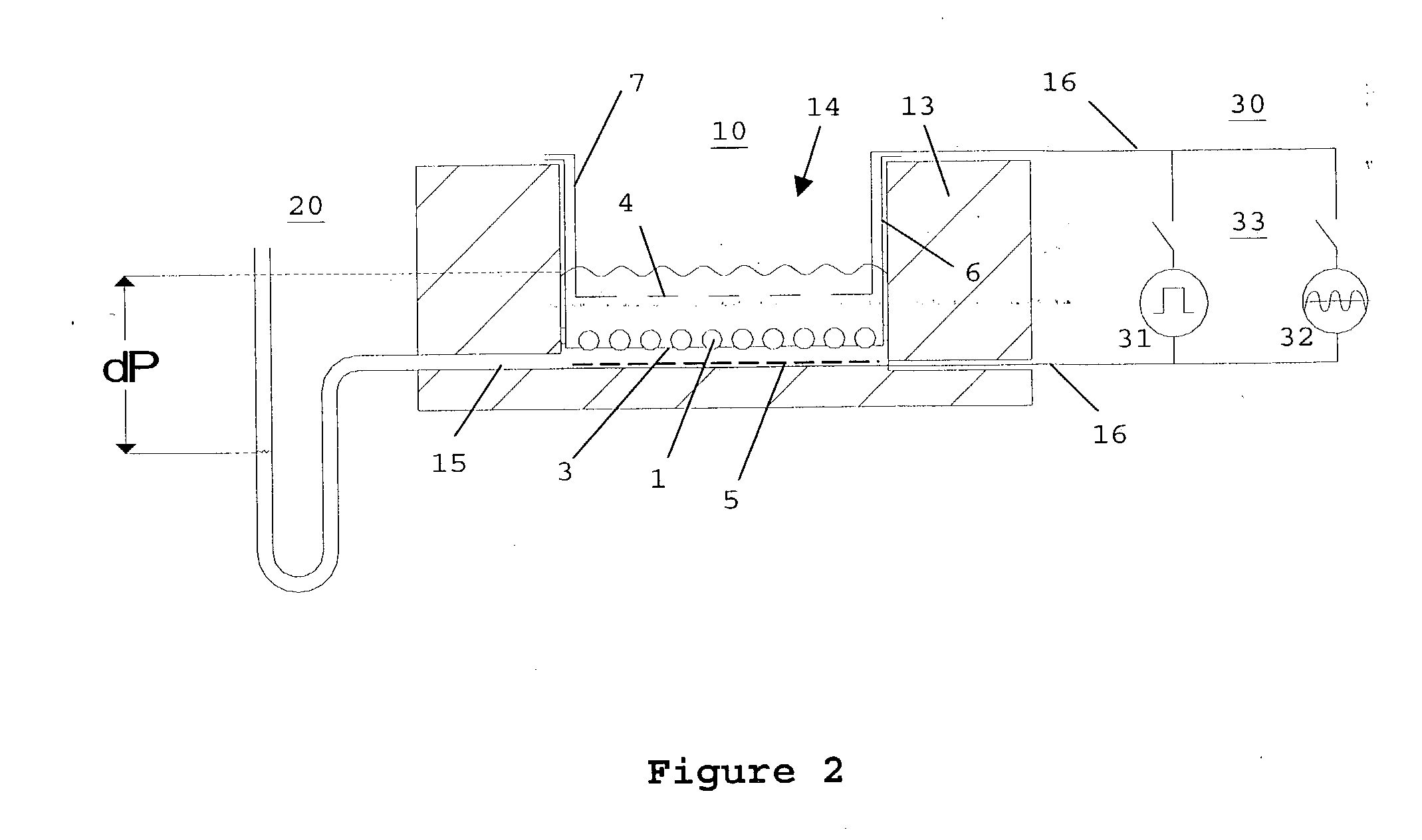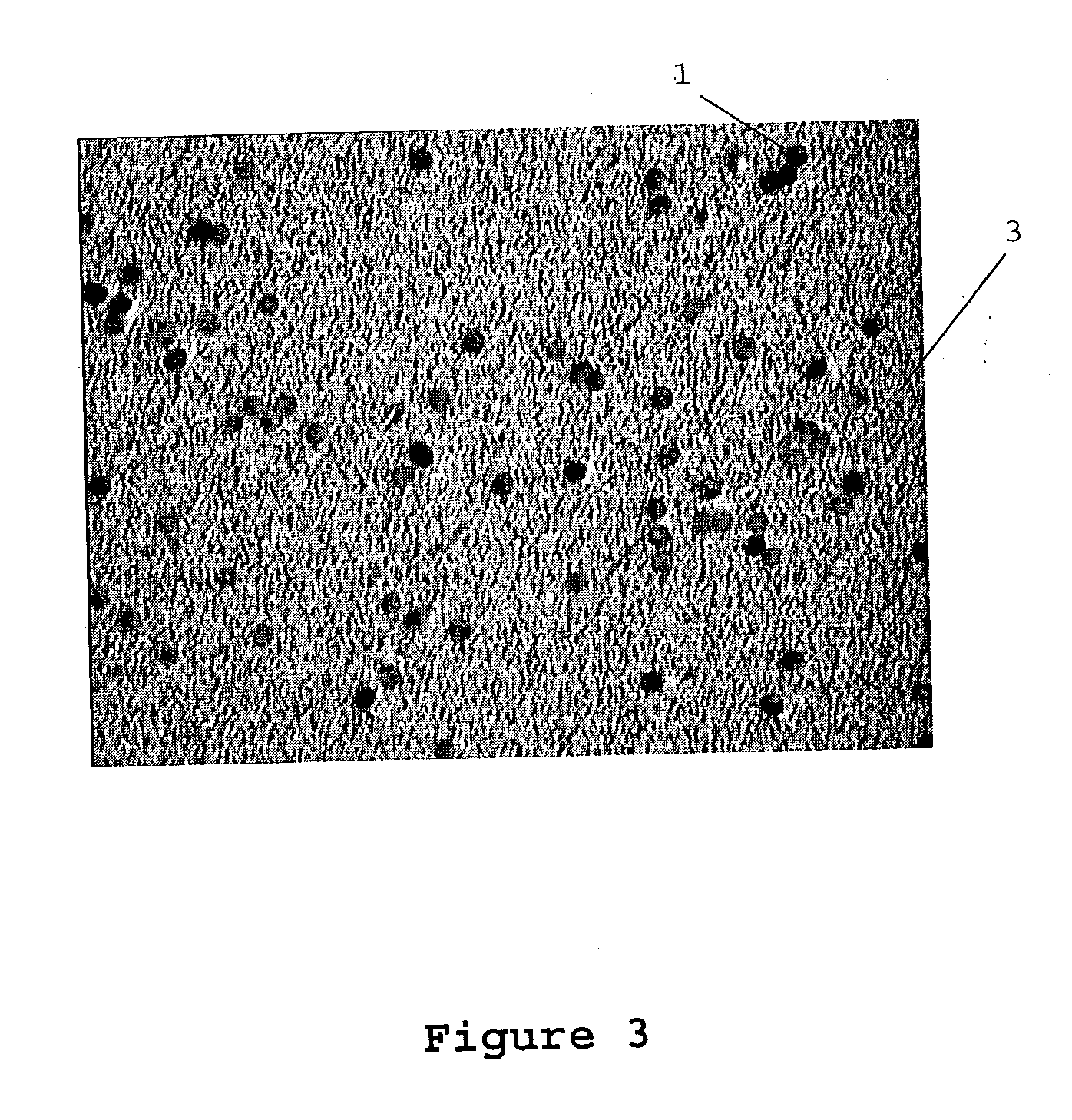Method and device for electroporation of biological cells
a biological cell and electroporation technology, applied in the direction of biomass after-treatment, enzymology, specific use bioreactors/fermenters, etc., can solve the problems of reducing the survivability of cells, reducing the number of available cells, and requiring careful and time-consuming optimisation of electropermeabilisation protocols
- Summary
- Abstract
- Description
- Claims
- Application Information
AI Technical Summary
Benefits of technology
Problems solved by technology
Method used
Image
Examples
Embodiment Construction
[0037] Cells
[0038] The mouse myeloma cell line Sp2 was cultivated in the RMPI 1640 Complete Growth Medium (CGM) with 10% FCS (Fetal Calf Serum, PAA, Linz, Austria) at 37.degree. C. under 5% CO2. The cells were kept in the exponential growth phase by subcultivation three times per week. Prior to commencement of electropermeabilisation, the cells were washed once or twice in pulse medium and resuspended in the pulse medium 10 min prior to pulse application. The average cell diameter was determined by electronic size determination by means of CASY (Scharfe Systems, Reutlingen, Germany) at approx. 14 .mu.m.
[0039] Pulse Media
[0040] A phosphate buffer comprising 1.15 mM K2HPO4 / KH2PO4 buffer, pH 7.2 was used as a pulse medium. KCl at a concentration of 10 and 30 mM respectively was added as a conducting salt. Osmolarity was set to 290 mOsm by adding Inositol, so as to obtain an isoosmolar solution.
[0041] Impedance Measurement Prior to Electroporation
[0042] FIG. 4A shows impedance spectra o...
PUM
| Property | Measurement | Unit |
|---|---|---|
| Pore size | aaaaa | aaaaa |
| Translucency | aaaaa | aaaaa |
| Frequency | aaaaa | aaaaa |
Abstract
Description
Claims
Application Information
 Login to View More
Login to View More - R&D
- Intellectual Property
- Life Sciences
- Materials
- Tech Scout
- Unparalleled Data Quality
- Higher Quality Content
- 60% Fewer Hallucinations
Browse by: Latest US Patents, China's latest patents, Technical Efficacy Thesaurus, Application Domain, Technology Topic, Popular Technical Reports.
© 2025 PatSnap. All rights reserved.Legal|Privacy policy|Modern Slavery Act Transparency Statement|Sitemap|About US| Contact US: help@patsnap.com



